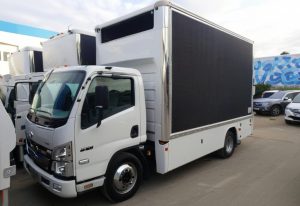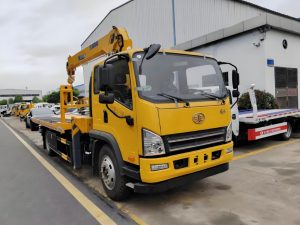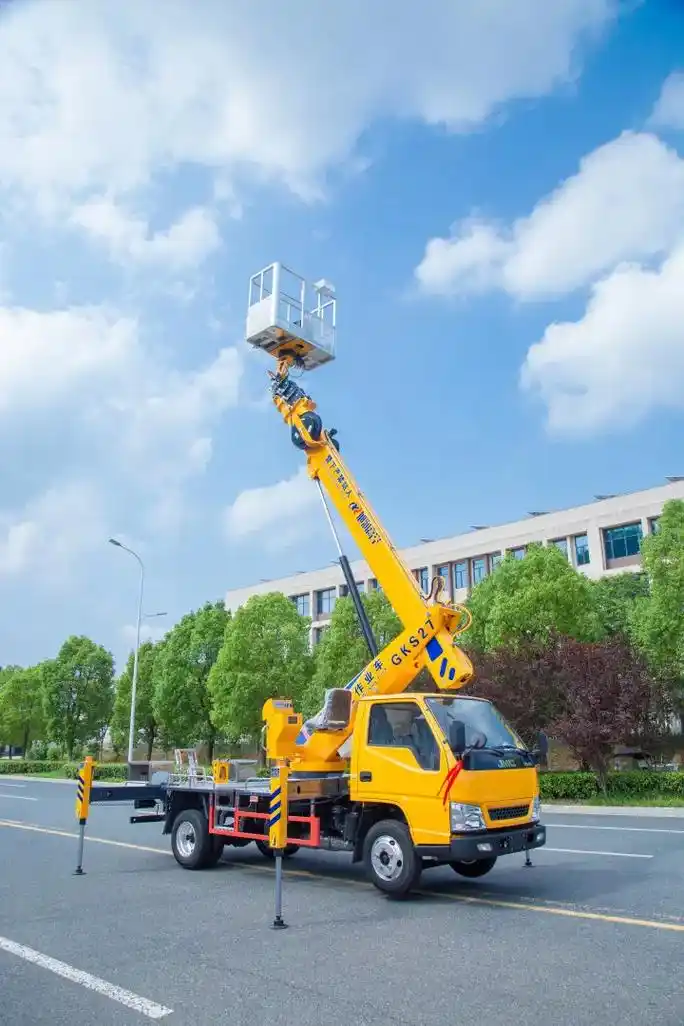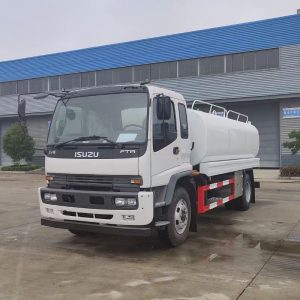Table of Contents
ToggleIntroduction
Welcome to the fascinating realm of truck mounted cranes, where engineering brilliance meets unparalleled mobility. Imagine the scenario: you have the raw lifting power of a stationary crane but with the ability to traverse highways, construction sites, and urban jungles alike. That’s the superpower these magnificent machines wield—combining the brute strength necessary for heavy lifting with the nimble adaptability to go wherever your truck can take you. Truck mounted cranes are more than just machines; they are vital lifelines across various industries that rely on their versatility and strength.
Truck mounted cranes are a cornerstone in sectors such as construction, logistics, and utility services. They’re not just about lifting; they’re about reaching, extending, and transforming how projects are executed. Think of them as the multitasking superheroes of the industrial world, providing solutions that are efficient and innovative. So, why are these cranes so essential? The answer lies in their ability to offer a dynamic solution to static problems, enabling projects to progress smoothly without the geographical limitations imposed by stationary cranes.
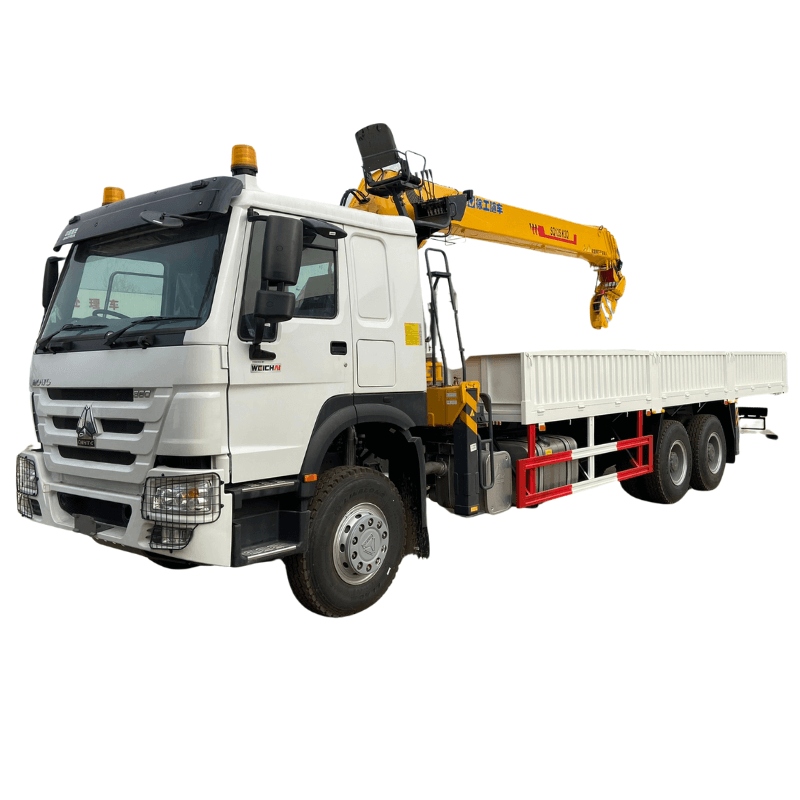
Types of Truck Mounted Cranes
Truck mounted cranes come in various shapes and sizes, each designed to meet specific needs and scenarios. Let’s explore these different types to understand their unique attributes:
Telescopic Cranes
Telescopic cranes are akin to the versatile Swiss Army knife in the world of cranes. Equipped with a boom that extends like a telescope, these cranes can reach impressive heights, making them ideal for tasks that require significant vertical reach. The telescopic boom is composed of multiple sections that slide out from one another, providing the flexibility needed to adjust reach as per the task’s requirements. This adaptability makes them indispensable in urban environments where maneuverability and reach are crucial.
Knuckle Boom Cranes
Knuckle boom cranes are the agile dancers of the crane world. Their booms fold in on themselves like a nimble arm, allowing for intricate movements and precision handling in confined spaces. This type of crane is perfect for urban environments or any setting where space is at a premium. They excel in tasks requiring delicate placement or operation around obstacles, offering unparalleled precision and control. The ability to articulate their booms makes them particularly valuable for tasks such as loading and unloading goods in narrow streets or crowded docks.
Fixed Boom Cranes
Fixed boom cranes are the stalwarts—simple yet robust. With a straightforward design that emphasizes strength over flexibility, these cranes are perfect for heavy lifting tasks where space and reach aren’t significant constraints. They’re often employed in industries where consistent lifting capability is required without the need for extensive maneuverability. Their reliability and ease of use make them a favorite for straightforward lifting operations.
Components of a Truck Mounted Crane
To truly appreciate these mechanical marvels, it’s essential to understand what makes them tick. Here’s a closer look at the core components that define a truck mounted crane:
The Chassis
The chassis is essentially the backbone of a truck mounted crane. It’s where strength and stability originate, supporting all other components while ensuring safe operation. Built to withstand heavy loads and harsh conditions, the chassis provides the foundation upon which everything else is built. Without a robust chassis, even the most advanced crane technology would be rendered ineffective.
The Boom
The boom is the muscle of the operation—an elongated arm capable of extending high into the sky or reaching far distances horizontally. It’s the part of the crane that does most of the heavy lifting. Depending on the type of crane, booms can be fixed, telescopic, or articulated like those in knuckle boom cranes. The material composition and design of booms are crucial for determining their lifting capacity and range.
The Stabilizers
Stabilizers might not get as much attention as other components, but they play a critical role in maintaining balance and safety during operations. These extendable legs deploy from the truck to provide additional support, ensuring that the crane remains steady even when lifting heavy loads. Without stabilizers, the risk of tipping or instability increases dramatically, making them an indispensable part of any truck mounted crane setup.
Advantages of Using Truck Mounted Cranes
Now that we have a basic understanding of what truck mounted cranes are and how they work, let’s dive into why they’re such a popular choice across various industries.
Mobility and Flexibility
One of the most significant advantages truck mounted cranes offer is their mobility. Unlike stationary cranes, which require considerable setup time and are confined to specific locations, truck mounted cranes can be driven directly to where they’re needed. This mobility translates into reduced downtime and increased efficiency, allowing projects to move forward without delay.
Moreover, their flexibility means they can adapt to different job sites and requirements effortlessly. Whether you need to lift materials onto a high-rise building or transport equipment across town, truck mounted cranes can handle it all without breaking a sweat.
Cost-Effectiveness
When it comes to economics, truck mounted cranes often present a more cost-effective solution than their stationary counterparts. They eliminate the need for multiple pieces of equipment on-site by combining transportation and lifting capabilities into one unit. This integration reduces operational costs significantly while maximizing resource utilization.
Additionally, because they can be quickly moved from one site to another, they reduce the need for costly logistical arrangements associated with transporting large equipment separately. This aspect alone can lead to substantial savings over time.
Applications in Various Industries
Truck mounted cranes are the unsung heroes in many sectors, providing crucial support across a wide range of industries. Let’s take a closer look at how these versatile machines are utilized:
Construction
In the world of construction, truck mounted cranes are indispensable. They’re used for everything from lifting steel beams and concrete slabs to placing roof trusses and installing prefabricated structures. Their ability to move around a construction site and adapt to various tasks makes them an essential tool for contractors aiming to meet tight deadlines and ensure efficient project execution. Imagine them as the reliable workhorse that keeps the construction machine running smoothly.
Transportation and Logistics
When it comes to transportation and logistics, truck mounted cranes shine brightly. They streamline the process of loading and unloading heavy cargo, reducing turnaround times at docks and distribution centers. Whether it’s lifting shipping containers or heavy machinery, these cranes provide the muscle needed to handle substantial loads efficiently. Their ability to travel alongside freight vehicles means they can deliver cargo directly to where it’s needed, optimizing supply chain operations.
Utility Services
In utility services, truck mounted cranes play a pivotal role in maintaining infrastructure. They are frequently used by utility companies for installing and repairing power lines, setting up telephone poles, and managing equipment in challenging locations. Their mobility allows service teams to access remote or hard-to-reach areas quickly, ensuring that essential services remain uninterrupted. Think of them as the first responders in the world of utilities, ready to tackle any challenge that comes their way.
Safety Measures and Regulations
Safety is paramount when operating heavy machinery like truck mounted cranes. Ensuring safe operation requires adherence to strict safety measures and regulations.
Operator Training
Proper training for operators is crucial. It’s not just about knowing how to control the crane; it’s about understanding the mechanics, safety protocols, and emergency procedures. Well-trained operators can make split-second decisions that prevent accidents and ensure smooth operations. Investing in comprehensive training programs is akin to arming operators with the skills needed to pilot these mechanical giants safely.
Regular Maintenance
Regular maintenance checks are vital to keep truck mounted cranes in optimal condition. Just like you wouldn’t drive a car with a broken engine, operating a crane without ensuring its components are in perfect working order is a recipe for disaster. Routine inspections help identify wear and tear before they become significant issues, ensuring the crane operates safely and efficiently at all times.
Technological Advancements in Truck Mounted Cranes
The field of truck mounted cranes has seen significant technological advancements that enhance their functionality and safety.
Automation and Control Systems
Automation is revolutionizing how cranes operate. Advanced control systems now allow for precise maneuvering and operation, reducing human error and increasing efficiency. These systems can automate repetitive tasks, allowing operators to focus on more complex operations. It’s like having a digital co-pilot guiding every move, ensuring accuracy and precision.
Load Monitoring Systems
Load monitoring systems have become integral to crane operations, providing real-time data on load weights and stability. These systems alert operators if a load exceeds safe limits or if there’s an imbalance, preventing potential accidents. By keeping an eye on every lift’s parameters, they ensure that operations remain within safe boundaries—acting as a vigilant watchdog over every load lifted.
Factors to Consider When Choosing a Truck Mounted Crane
Choosing the right truck mounted crane requires careful consideration of several factors to ensure it meets your specific needs.
Load Capacity
One of the most critical factors is load capacity. Depending on what you plan to lift, you’ll need a crane that can handle the weight without compromising safety or efficiency. It’s essential to evaluate the heaviest loads you’ll encounter regularly and choose a crane that can manage them with ease—like picking the right size tool for the job.
Terrain Adaptability
Another important consideration is terrain adaptability. Will your crane be operating on smooth city streets or rugged off-road environments? Ensuring that your chosen crane can handle the terrains it will encounter is crucial for maintaining stability and operational efficiency.
Future Trends in the Truck Mounted Crane Industry
Looking ahead, several exciting trends are shaping the future of truck mounted cranes.
Sustainability and Eco-Friendly Solutions
Sustainability is becoming increasingly important across industries, and truck mounted cranes are no exception. Manufacturers are exploring eco-friendly solutions such as electric or hybrid models that reduce emissions and environmental impact. These innovations are paving the way for greener construction sites and more sustainable industrial practices.
Integration of AI and IoT
The integration of Artificial Intelligence (AI) and the Internet of Things (IoT) is transforming how truck mounted cranes operate. AI can enhance decision-making processes by analyzing data from IoT sensors embedded within cranes, leading to smarter, more efficient operations. Imagine cranes that learn from their environment, adapting in real-time to optimize performance—turning science fiction into reality!
Conclusion
In conclusion, truck mounted cranes are not just mechanical marvels; they are vital cogs in the machinery of modern industry. From their diverse applications in construction, logistics, and utilities to the technological advancements enhancing their capabilities, these cranes offer unmatched versatility and efficiency. As we look toward a future where sustainability and smart technology play pivotal roles, truck mounted cranes will continue to evolve, meeting new challenges head-on with innovation and adaptability. Next time you see one rolling down the road or towering over a construction


